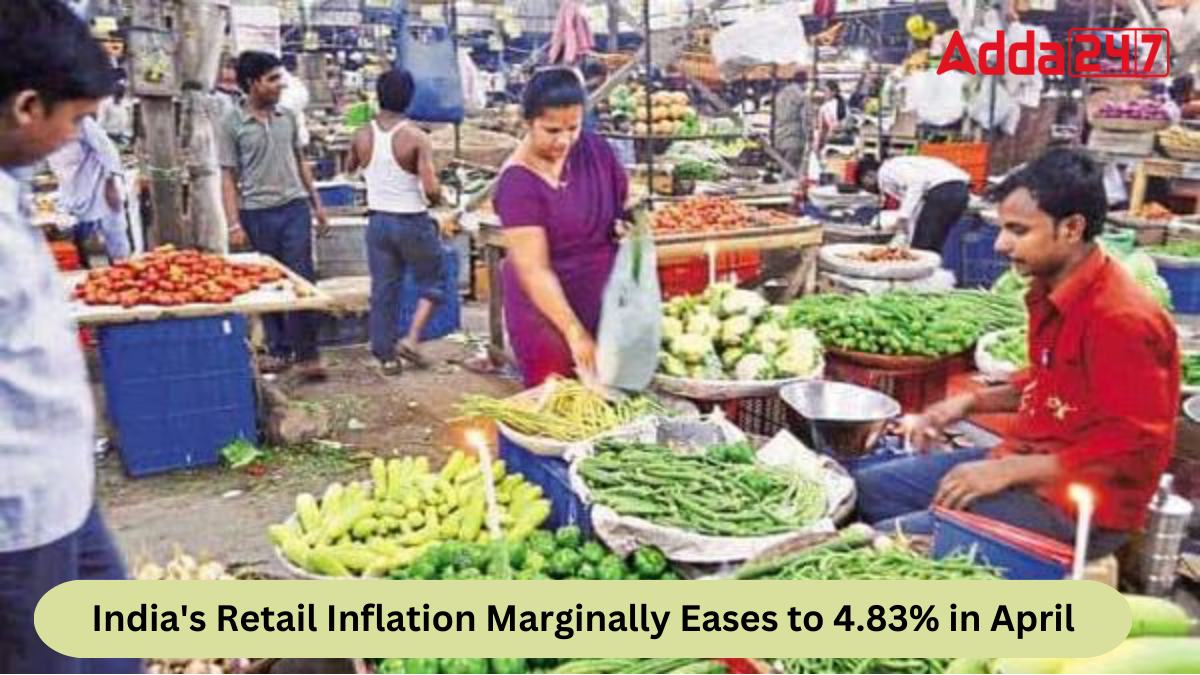India’s retail inflation has eased marginally to touch an 11-month low of 4.83 per cent on an annual basis in April, according to government data released on Monday. This slight dip from the previous month’s figure of 4.85 per cent aligns closely with the projections of a Reuters poll of 44 economists, who estimated the number to come down to 4.80 per cent. Importantly, this figure falls within the Reserve Bank of India’s (RBI) tolerance band of 2-6 per cent.
Food Basket Inflation Remains Elevated
Despite the overall moderation in inflation, the inflation rate in the food basket grew at 8.7 per cent in April, up from 8.52 per cent in March, as per data from the National Statistical Office (NSO). Notably, India’s vegetable inflation slightly decreased to 27.80 per cent year-on-year compared to 28.30 per cent in March. However, inflation rates for cereals and pulses, crucial components of India’s staple diet, remained elevated at 8.63 per cent and 16.84 per cent, respectively.
Contractions in Fuel and Light Inflation
In contrast to the food sector, the inflation rate for fuel and light witnessed a contraction of (-)4.24 per cent in April, reflecting a downward trend in energy prices.
Inflation Trends Across Various Commodities
Among the top five groups, the year-on-year inflation in categories like ‘Clothing & Footwear’, ‘Housing’, and ‘Fuel & Light’ has decreased since the previous month. Specifically, the inflation rates for clothing & footwear and the housing sector stood at 2.85 per cent and 2.68 per cent, respectively.
RBI Governor’s Insights: Inflation as the “Elephant in the Room”
Reserve Bank of India (RBI) Governor Shaktikanta Das, while unveiling the outcomes of the first bimonthly Monetary Policy Committee (MPC) meeting of FY25, emphasized inflation as a prominent challenge, describing it as “the elephant in the room.” Governor Das expressed cautious optimism, noting that inflation appears to be reverting to the desirable threshold of 4 per cent.
Governor Das highlighted the downward trajectory of inflation, attributing it to favorable base effects. However, he acknowledged the persistent pressure from service prices, which has kept the key indicator at a heightened level compared to the stipulated targets.
Persistent Uncertainties in Inflation Dynamics
Despite the recent decline, inflation remains subject to uncertainties, particularly regarding food prices. The erratic movement in food prices continues to contribute to inflation uncertainties, with food inflation climbing to 7.8 per cent in February after a correction in January.
Meanwhile, fuel prices have sustained a deflationary trend for the sixth consecutive month in February. The core Consumer Price Index (CPI), excluding food and fuel, witnessed disinflation, dropping to 3.4 per cent in February. This figure marks one of the lowest levels in the current CPI series, with both goods and services components experiencing a decline in inflation.
Policy Outlook Amidst Economic Challenges
In its April 2024 meeting, the MPC left its inflation forecast for the fiscal year unchanged at 4.5 per cent, assuming normal monsoon conditions. However, the country faces challenges such as a scorching summer, a spike in crude oil prices, and persisting worries about supply chain disruptions due to the Red Sea crisis. These factors add layers of complexity to the inflation outlook, requiring careful monitoring and potentially proactive policy measures to navigate the evolving economic landscape.



